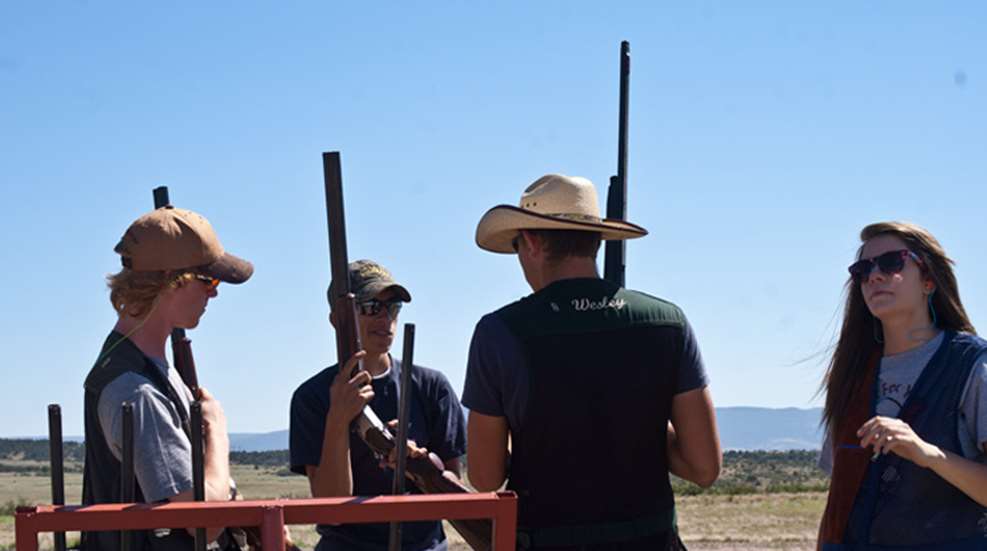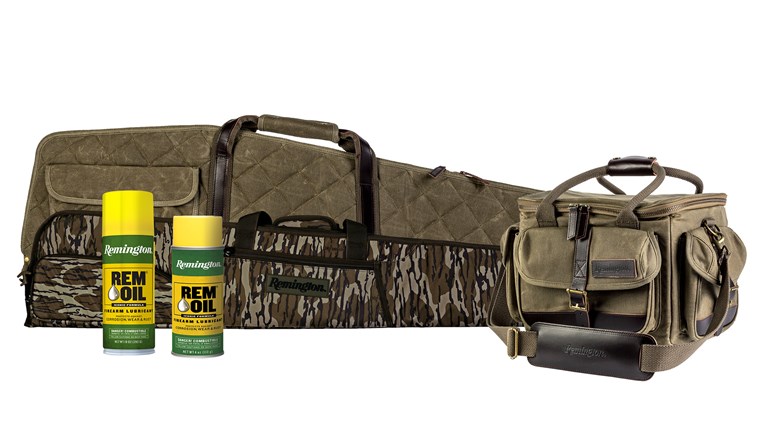
There is something inherently fun about intercepting a flying target with a shotgun and smashing it to smithereens. Your kids and spouse will find it delightful too-if they know the basics of shotgun safety, have reasonable expectations and are coached with an emphasis on fun.
Several years ago I took my girlfriend, a reasonably good skeet shooter, to the local clays club to join a buddy who was also bringing a date. Kyle's date Rachel had never shot before, so he taught her the basics of shotgun handling and let her proceed at her own pace. She missed many targets but learned with each shot. Recognizing Rachel's errors, however, my girlfriend began peppering Rachel with pointers, thinking she was helping. Rachel grew confused by all the instruction now coming from two people and began digressing. Worse, with each shot she became more embarrassed. She never shot again to my knowledge, as Kyle didn't get a second date.
Don't overwhelm new shooters with instruction. Teach the basics one step at a time. Wingshooting is learned via experience.
Range Primer
Before arriving at a trap and skeet club, either seek professional instruction for the family if you are not a seasoned wingshooter, or teach your family the basics of skeet shooting beforehand. Ideally, every shooter should take an NRA Certified shotgun class. Choose a gun that fits the shooter and doesn't punish them with excessive recoil. If you don't have a shotgun, many ranges rent them, but call beforehand.
Beginner's Tip: A 20-gauge, semi-automatic shotgun, like a Remington 1100, Mossberg SA-20 or Benelli Montefeltro with a skeet or improved cylinder choke is ideal.
NRA offers a list of certified instructors in your area. They will teach not only safety, but the basics of how a shotgun works, from action to shells to chokes. But if you decide to teach your family the shotgun sports on your own, it's often best to begin on private property out in the country. Bring a shotgun, several boxes of No. 8 shotshells, a box of clay pigeons, a clay pigeon thrower and ear/eye protection. While an inexpensive hand thrower will work, a spring-powered thrower like the Skybird from Champion is even better, because the speed and trajectory of its targets are consistent.
Before attempting to shoot a flying target, it's important that new shooters shoot a few stationary targets first. A clay pigeon placed on the ground is just fine. On the first few shots, concentrate on mechanics and stance. After that's mastered, practice shouldering the gun and not aiming at the target but pointing at it and firing quickly after the barrel is aligned with the eye. Finally, try flying targets. Shoot a few shots, then rotate shooters. Don't worry about breaking the target every time. Just have fun. When handling becomes familiar, targets will start falling.
Of course, if you don't have access to a place to shoot clay pigeons on your own, you'll have to take the family to an organized field. Most field operators ask customers if they've shot before. Be honest. Reveal experience levels of all shooters. If they've shot a few times and are safe, but have never shot organized skeet, say so. Exaggerating a shooter's experience will only add confusion and embarrassment-the makings of a bad experience. While the skeet field's officials have no way of knowing whether someone has shot before, it will quickly be revealed. Get lessons then and there if you or your family needs them and they're available.
Clay Games:
Wobble Trap: For beginners, try "wobble trap" first, rather than trap or skeet. Typically, five shooters stand in five "stations" on a platform over a target-throwing machine, called the trap. Shooters shoot one shot in order, for five shots before moving to the next station. Wobble trap is so called because the trap oscillates back and forth and up and down as to send each target with slight variation. It provides easier targets that launch in front of the shooter. It's easier than trap or skeet, and it's fun because it's fast paced, and even beginners can usually hit a couple.
Skeet: Skeet is a game involving two "trap houses," (the high house and low house) in which shooters move across eight different positions in a half-moon shape around them. In this way, 16 different target angles are presented. A "round" consists of 25 shots including a single target from each house from each station, a simultaneous pair (a target from both houses thrown at the same time) on stations 1,2,6 and 7, and a bonus target.
Tip for Beginners: When teaching a new shooter the game of skeet, ask the "puller" to throw the pairs as singles instead.
Trap: This clay game features five stations behind the trap house, starting from 16 yards away and going back to 28 yards. Each game is shot from one distance, with up to five shooters shooting one shot in order for five shots, then rotating to the next station until 25 shots are fired.
Tip for Beginners: Start at the 16-yard line, and don't aim at the bird, rather point. While trap is one of the only shotgun games that can be shot well by aiming, it's a detrimental habit will be tougher to break down the road. For 16-yard line shooting, do not use a full choke as many competitive trap shooters recommend, but rather improved cylinder.
Sporting Clays: Sporting clays is a game that emulates hunting scenarios. Targets that spring in the air like teal, dart in the woods like quail, pass high overhead like ducks or bounce on the ground like rabbits are all part of its allure. Typically, a round consists of 50 shots over a course of six to 10 stations with various target presentations. It's tons of fun, and good exercise. Just don't expect to hit many if it's your first time.
Tip for Beginners: If it's your turn to shoot first on a station, ask to see a target before shooting. Secondly, always bring more shells than the number of targets presented.
5 Stand: An abbreviated version of sporting clays, this game consists of 5 stations that each offer a different angle at various targets. Challenging combinations of singles and doubles, including "simo pairs" (targets thrown at the same time) and report pairs (a second target is thrown when the gun's report from the first target is heard) make the game ultra-challenging. In addition to pure shooting skill, at each station shooters must consider where each target will emerge and plan the best strategy moments before shooting.
Beginners Tip: Temper expectations: Don't get upset if you break five out of 25 targets. Indeed, never get upset while enjoying the shooting sports-after all, shooting is fun.
Finally, remember to tip your puller if he does his job. $1 per round, per person is the normal gratuity rate. Compliment new shooters and offer positive encouragement often.






































